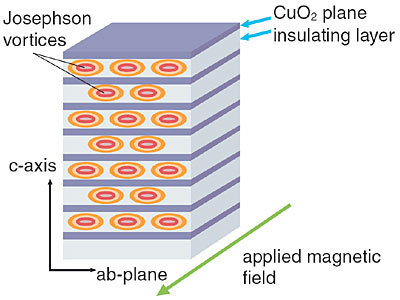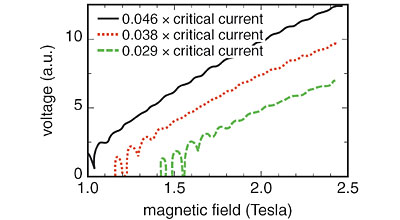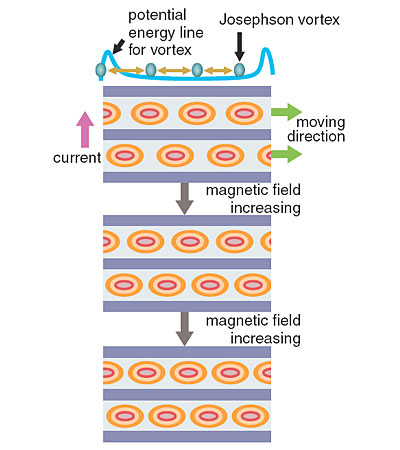|
Since the discovery of High-Tc superconductivity, many investigations have been completed and various unique properties have been clarified. For example, the crystal structure stacked along the c-axis shown in Fig. 10-1 results in a weak Josephson coupling between neighboring CuO2 plains and forms naturally stacked Josephson junctions. To date, the Josephson junction has been expected to be an alternative device showing high-speed electromagnetic response as compared to a semiconductor. Thus, High-Tc superconductors are now regarded as promising materials which have a great advantage in mass-production of homogeneous Josephson junctions since the crystal itself is a natural Josephson junction. Recently, an experimental research group in the National Institute for Materials Science reported that the electrical resistivity in High-Tc superconductors periodically oscillates when an applied magnetic field is varied and that the periodicity is very precise for changes of the magnetic field. We have investigated this phenomenon by performing computer simulations because this feature may be quite useful for detecting tiny magnetic field variations induced by defects inside materials. Consequently, we succeeded in reproducing the experimental results, as shown in Fig. 10-2, and have found that the voltage depression occurs when Josephson vortices simultaneously enter and leave at the sample edge. The origin of the depression is as follows. Generally, Josephson vortices form a triangular lattice and move under transport currents keeping the lattice structure, while they feel a surface barrier at the sample edge. Thus, the lattice encounters strong resistance for its motion when Josephson vortices simultaneously enter and leave as shown in Fig. 10-3. Furthermore, the fact that the lattice constant is proportional to the magnetic field indicates that the lattice feels strong resistance only when the magnetic field satisfies a condition that the lattice constant is commensurable with the crystal width. Now, we are studying how far the periodic quality holds with respect to the temperature and the magnetic field and examining the possibilities of using this phenomenon in a practical device.
|


